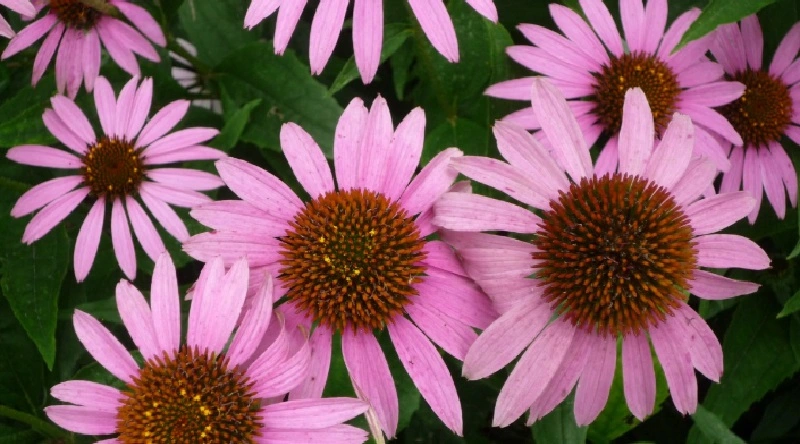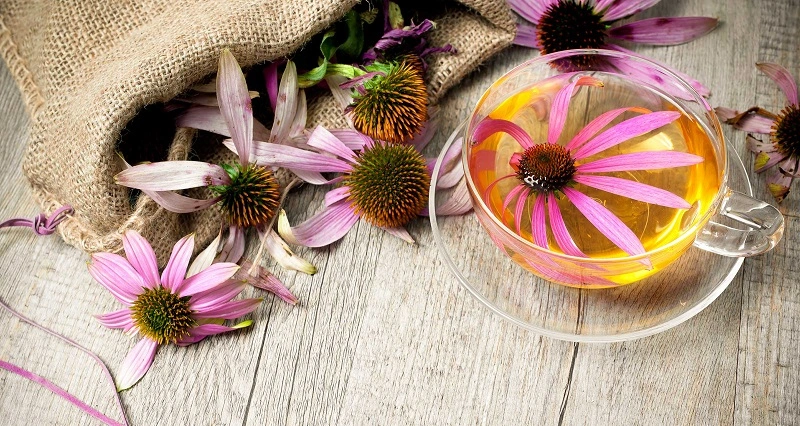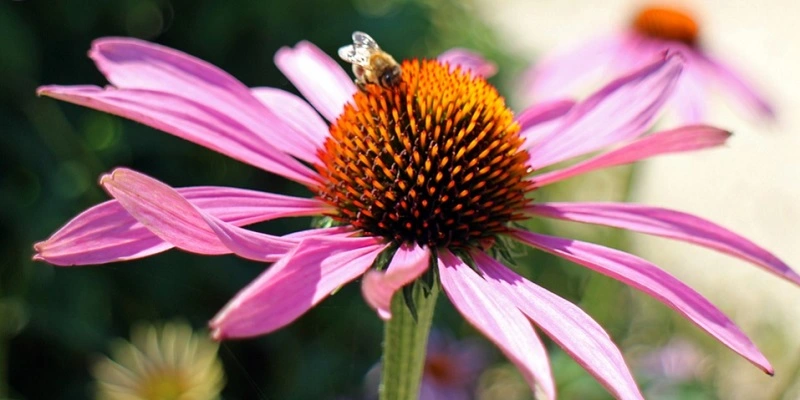Echinacea has beneficial properties that help in the treatment of various diseases. With the help of echinacea increase immunity.
Echinacea purpurea is native to North America, and it lives up to its name – its flowers are beautiful purple. There are other species of this plant: the most famous is Echinacea narrow-leaved, and pale purple, but the most commonly used is Echinacea purpurea.
Today, echinacea is cultivated as a medicinal and ornamental plant. Its flowers, leaves and roots are used for medicinal purposes.
Composition and useful properties of echinacea
Immunomodulatory properties of echinacea due to the fact that it contains many biologically active substances. These are polysaccharides, essential oils, glycosides, saponins, resins, organic acids (including polyunsaturated fatty acids) and phytosterols, alkaloids, tannins; phenolic acids – have antiseptic properties; polyenes are substances that destroy many species of fungi.
In all parts of echinacea a lot of minerals, including rare, which we often lack in the diet: calcium, potassium, selenium, manganese, zinc, molybdenum, silver, cobalt, chlorine, iron, aluminum, magnesium, vanadium, barium, beryllium, nickel.
Echinacea has anti-inflammatory, antifungal, antiviral, anti-allergic, antirheumatic and immunomodulatory effects.

Use and treatment of echinacea
It is used for colds, flu, ear infections, bladder diseases, mononucleosis, infected blood; liver disease, chronic inflammation, diabetes; consequences of exposure to chemicals – insecticides, pesticides, fungicides, heavy metals; after chemotherapy and radiation therapy, antibiotic treatment.
At skin diseases and problems echinacea is applied externally: at herpes, eczema, urticaria; boils, abscesses, wounds, burns, insect bites.
Lotions are made from echinacea decoction: for psoriasis, snake bites, streptococcal infections.
By strengthening the immune system, echinacea can also kill some viruses and bacteria: for example, its extracts delay the reproduction of influenza, stomatitis and herpes viruses, Escherichia coli, staphylococci and streptococci. This suggests that the plant can indeed be considered a unique natural antibiotic.
Echinacea drugs give excellent results in gynecological diseases, prostatitis, osteomyelitis, polyarthritis, diseases of the upper respiratory tract.
The composition and action of Echinacea purpurea have been studied quite well, but still not completely.
The most well-known action of polysaccharides – starch, cellulose and hemicellulose, inulin and pectin. They help the body fight viruses and clean the tissues of affected cells, as they stimulate the production of T lymphocytes and increase the activity of white blood cells.
Polysaccharides protect our cells from infection: they surround them by preventing bacteria and viruses from entering.
This is the same action called immunostimulatory; polysaccharides also accelerate tissue regeneration. Echinacea polysaccharide increases immunity to bacteria and viruses, kills fungi and microbes, suppresses inflammation, reduces pain and accelerates tissue healing.
Thanks to the glycosides of caffeic acid, echinacea significantly accelerates recovery from infectious and viral diseases. Caffeic acid and its derivatives in general have high biological activity – above all, they have antioxidant and anticancer effects – may even delay the development of metastases; destroy fungi and mold; reduce the level of toxins.
Oxycinnamic acids contained in echinacea, act as independent active substances, also have a pronounced antimicrobial and anti-inflammatory effect, improving kidney and liver function; they also reduce the amount of nitrogen metabolism in the blood, and thus prevent the development of chronic diseases.
Echinacea prevents the breakdown of hyaluronic acid, which fills the space between cells and blocks the spread of bacteria and viruses.
Inulin also destroys viruses and increases the activity of leukocytes.
As you can see, the effect of echinacea is quite large, and the possibilities for combating the diseases that this plant opens up, are still being carefully studied.


